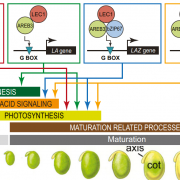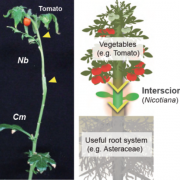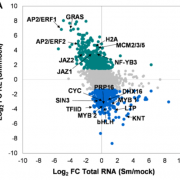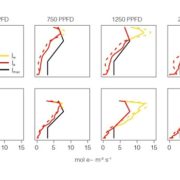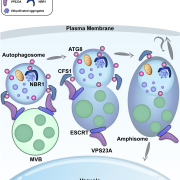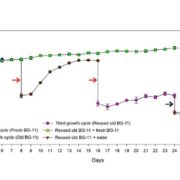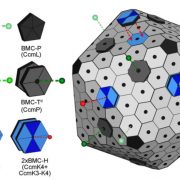Establishment of photosynthesis is controlled by two distinct regulatory phases ($)
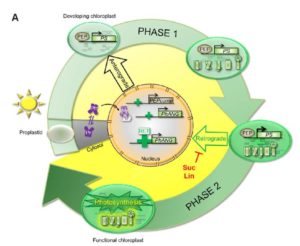 Chloroplast biogenesis and leaf development are closely linked processes that have been difficult to tease apart, until recently. Dubreuil et al. used a pluripotent inducible cell line from Arabidopsis, basically plant stem cells, which develop chloroplasts on demand when exposed to light. Using this system as well as developing maize leaves, the researchers proposed a two-phase system for chloroplast development. In phase one, there is a rapid change in nuclear gene expression (3084 differentially expressed genes between Zero and One day of light), accompanied by a shift in the cells’ metabolome. Between day Four and Five, the second phase begins with another nuclear gene expression transition (12,411 differentially expressed genes), including chloroplast and chromatin modification genes. This change was correlated with the appearance of intact and functional photosynthetic units within the thylakoid membranes. Chloroplasts also changed shape from tubes to globular organelles and started to move away from the nucleus towards the cell cortex. The second phase could be inhibited by sucrose or lincomycin suggesting that it depends on retrograde signaling. This paper is a fantastic start to the full dissection of chloroplast biogenesis process. Plant Physiol. 10.1104/pp.17.00435 (Contributed by Jennifer Robinson)
Chloroplast biogenesis and leaf development are closely linked processes that have been difficult to tease apart, until recently. Dubreuil et al. used a pluripotent inducible cell line from Arabidopsis, basically plant stem cells, which develop chloroplasts on demand when exposed to light. Using this system as well as developing maize leaves, the researchers proposed a two-phase system for chloroplast development. In phase one, there is a rapid change in nuclear gene expression (3084 differentially expressed genes between Zero and One day of light), accompanied by a shift in the cells’ metabolome. Between day Four and Five, the second phase begins with another nuclear gene expression transition (12,411 differentially expressed genes), including chloroplast and chromatin modification genes. This change was correlated with the appearance of intact and functional photosynthetic units within the thylakoid membranes. Chloroplasts also changed shape from tubes to globular organelles and started to move away from the nucleus towards the cell cortex. The second phase could be inhibited by sucrose or lincomycin suggesting that it depends on retrograde signaling. This paper is a fantastic start to the full dissection of chloroplast biogenesis process. Plant Physiol. 10.1104/pp.17.00435 (Contributed by Jennifer Robinson)


